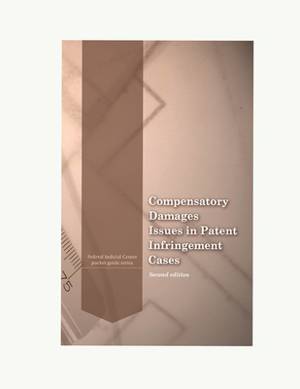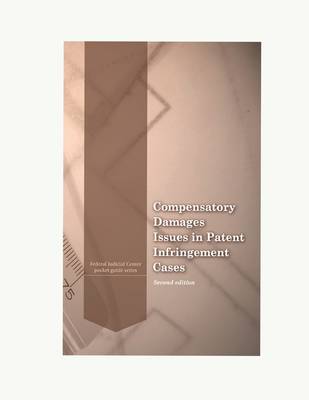
- Afhalen na 1 uur in een winkel met voorraad
- Gratis thuislevering in België vanaf € 30
- Ruim aanbod met 7 miljoen producten
- Afhalen na 1 uur in een winkel met voorraad
- Gratis thuislevering in België vanaf € 30
- Ruim aanbod met 7 miljoen producten
Zoeken
Compensatory Damages Issues in Patent Infringement Cases - Second Edition
Federal Judicial Center
Paperback | Engels
€ 22,45
+ 44 punten
Omschrijving
Several years ago, then-Chief Judge Paul R. Michel of the U.S. Court of Appeals for the Federal Circuit brought together a diverse group of lawyers, judges, academics, and experts to develop a guide for trial courts to consult when faced with issues of compensatory damages in patent infringement cases. The goal was to bring to bear the participants' collective experience on how best to address and resolve patent damages issues, all within the overarching framework of achieving the "just, speedy, and inexpensive determination of every action and proceeding."1 The first edition of this pocket guide, published in 2011, was the result. As that initial publication recognized, however, patent infringement damages is a continuously evolving area of law. In the intervening years, the courts not only have continued to refine the legal principles that govern the determination of patent infringement damages, but also have implemented a variety of case-management techniques that focus on patent damages. Judge Jeremy Fogel, director of the Federal Judicial Center, therefore requested a revised patent damages guide to reflect the current state of the law and the courts' evolving case-management efforts. This second edition is the result. As with the original, this revised guide does not attempt to provide a comprehensive explication of substantive damages law or to predict its future evolution. Rather, it is intended to focus on case-management practices that may be helpful to the courts in the adjudication of patent infringement damages. Because judges have requested inclusion of more substantive damages law, however, we have added more detail in this regard, but we have stopped well short of presenting a patent damages treatise.
Specificaties
Betrokkenen
- Auteur(s):
- Uitgeverij:
Inhoud
- Aantal bladzijden:
- 128
- Taal:
- Engels
Eigenschappen
- Productcode (EAN):
- 9781716583940
- Verschijningsdatum:
- 13/09/2020
- Uitvoering:
- Paperback
- Formaat:
- Trade paperback (VS)
- Afmetingen:
- 216 mm x 279 mm
- Gewicht:
- 312 g

Alleen bij Standaard Boekhandel
+ 44 punten op je klantenkaart van Standaard Boekhandel
Beoordelingen
We publiceren alleen reviews die voldoen aan de voorwaarden voor reviews. Bekijk onze voorwaarden voor reviews.











